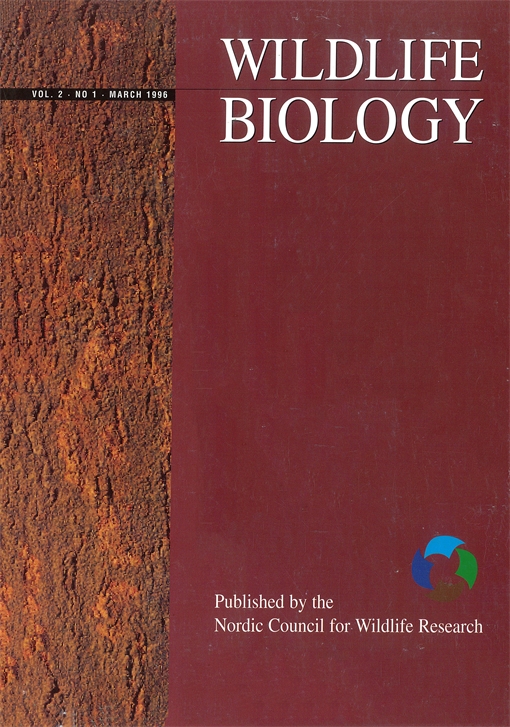One paradigm in the biology of game animals is that short-term fluctuations in population densities can be explained with variations in weather. A number of empirical models have been produced supporting this view. However, validation of such models has often been lacking or insufficient. Two methods for checking the validity of such models are presented. The first method is to derive a model for one population and test it against another data set. The second method is to evaluate the forecasting power of the model. For these purposes, the relation between 36 weather variables and population parameters of capercaillie Tetrao urogallus, black grouse T. tetrix, and hazel grouse Bonasa bonasia was studied using population data (1964 – 1984) from three adjacent provinces in Finland. Total population size, number of juveniles and population growth rate were used as dependent variables. Prior to the analyses, the population data were ln-transformed and detrended. Stepwise regression analysis was used with province-specific weather data as explanatory variables. These models were then used to make forecasts one year ahead for each species and province, and the prediction was tested against observed data. Transferred models from the other provinces were also used. The requirement for a good empirical model is that it should be possible to use the model on similar problems in nearby areas. Stepwise regression analyses yielded reasonable fits in most cases ( ranging between 0.2 – 1.0). However, a model from a given province invariably produced a poor fit when applied to another province. Forecasting the population dynamics was only occasionally successful, and was not directly related to the fit of the models. The results suggest that it may often be hazardous to use weather data for predicting population fluctuations of game species, especially for management purposes. This conclusion was further strengthened by demonstrating that using 36 province-specific white noise variables, it was possible to build models with fit and forecasting properties essentially equal to those of the weather-based models.
ranging between 0.2 – 1.0). However, a model from a given province invariably produced a poor fit when applied to another province. Forecasting the population dynamics was only occasionally successful, and was not directly related to the fit of the models. The results suggest that it may often be hazardous to use weather data for predicting population fluctuations of game species, especially for management purposes. This conclusion was further strengthened by demonstrating that using 36 province-specific white noise variables, it was possible to build models with fit and forecasting properties essentially equal to those of the weather-based models.
How to translate text using browser tools
1 June 1996
Weather and grouse population dynamics
Jan Lindström
<
Previous Article
|

Wildlife Biology
Vol. 2 • No. 2
1996
Vol. 2 • No. 2
1996
forecasting
grouse
population dynamics
weather




